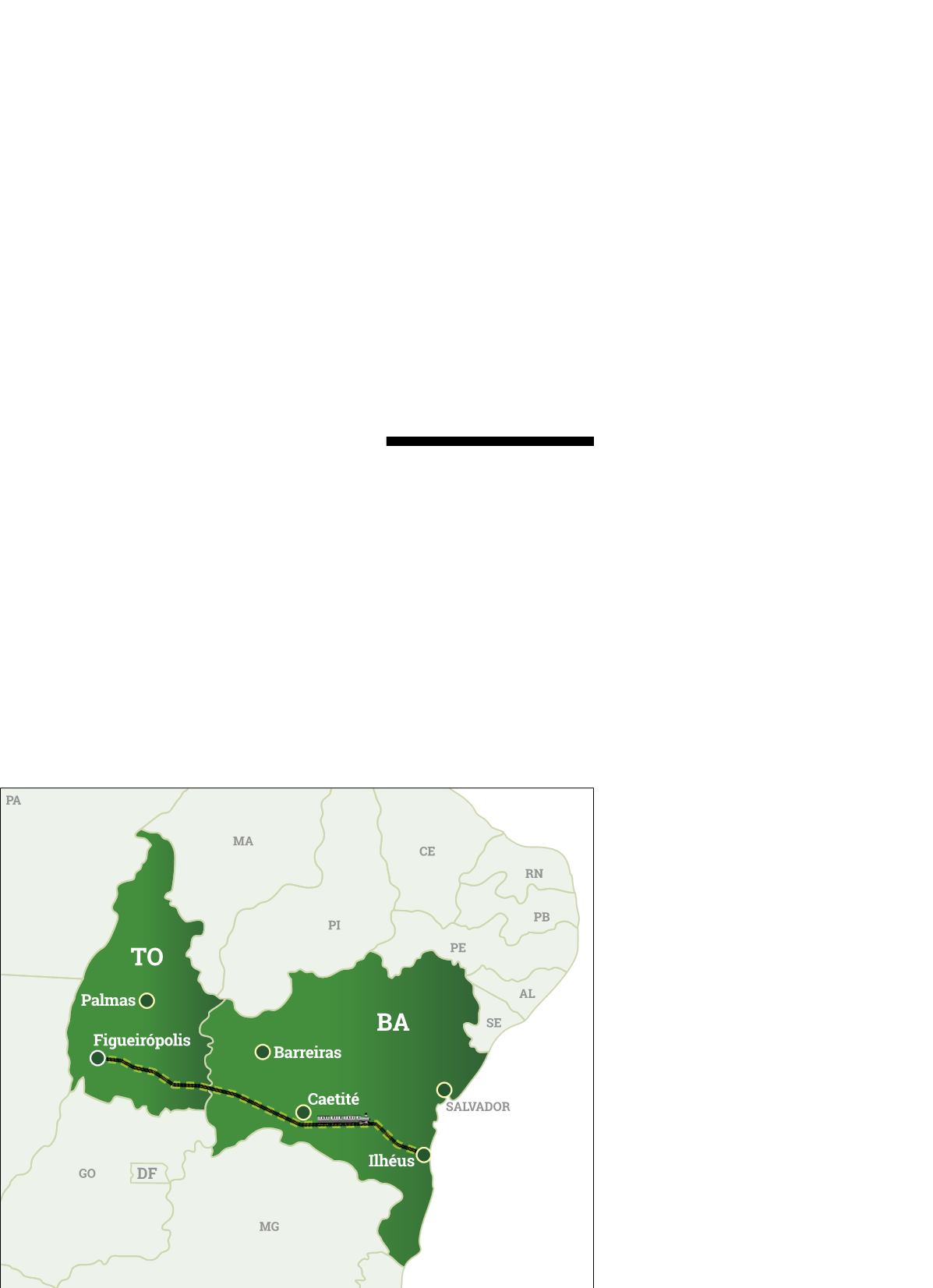
FERROVIADE INTEGRAÇÃO
OESTE-LESTE
62
Faster
rails
WesternBahia shows
great interest in speeding
up the construction of the
railway that will serve the
region, and is in a position
to speed up and reduce
the cost of transport
A railway connection that is of great interest toWesternBa-
hia, the so-called West-East Integration Railway (Fiol), has not
yet got on track, as promised by the government, and long-
awaited by the region. More than 1,500 kilometers long, con-
necting the East, in Ilhéus (BA), with the State of Tocantins, in
the North, passing through Western Bahia, its construction is
moving slowly, prompting claims by local leaderships who re-
quirecompliancewith the initial goal. TheBahiaAssociationof
Farmers and Irrigators (Aiba) and the Bahia Association of Cot-
ton Producers (Abapa) have made requests towards this end,
providing information on its relevance in terms of regional lo-
gistics, in order to reduce costs and speed up crop transporta-
tion, nowentirely by roadway.
According to the entities in the region,
the logistics of the productive sector, tak-
ing into consideration export-oriented
transportation through the ports of Sal-
vador and Santos, represents about 30%
of the costs spent by the rural producers.
Therefore, with an eye towards higher
competitiveness and a “faster, speedier
and safer modal”, they again, in September 2017, contact-
ed the authorities of the State Government, in charge of su-
pervising the work and the concession of the federal gov-
ernment. “The railway will play a fundamental role not only
for agribusiness, but also for the economic future of our re-
Works at Fiol,
runningfarbehind
schedule, giverise
tonewclaims
gions”, said Davi Schmidt, vice-president at
Aiba. Júlio Cézar Busato, president of Abapa,
reinforced that “there is need to reduce trans-
port and logistic costs, and a railway of such
magnitude is the solution”.
With its beginning in 2011, the enterprise
has failed to comply with the previously pro-
jected chronograms, for the lack of resourc-
es. Split into three parts and 12 lots, it has only
finished stretch 1 (Ilhéus-Caetité) and stretch
two (Caetité-Barreiras), both in Bahia, which
were budgeted at R$ 6.4 billion. Judging from
the information released in early October 2017
by Valec Engenharia, Construções e Ferrovias
SA, linked to the Ministry of Transport and re-
sponsible for the work, the stretches crossing
Bahia had only completed 30% of the initial
estimate. At its starting point, in the East, the
works have reached upwards of 70%. Further-
more,asapartoftheworkintheWestwascon-
sidered essential, it included the “construction
of the longest railway bridge in Latin America,
which spans 2.9 kilometers over the São Fran-
cisco River, supported by 82 pillars”.
The State Government, in turn, in Sep-
tember 2017, gave publicity to the signa-
ture of the Protocol of Intentions with China
for future works to be executed at the South
Port of Ilhéus, which is part of the complex.
The project equally involves mining com-
panies, likewise interested in the construc-
tion of the railway for transporting their
products. Everything adds more weight to-
wards the continuity and the conclusion, in
the shortest time possible, of this transport
route, in itself of great relevance to the state
and to the Country, seeing that an improve-
ment to the means of transport in Western
Bahia benefits the region, as well as the nec-
essary inputs for the productive process.


